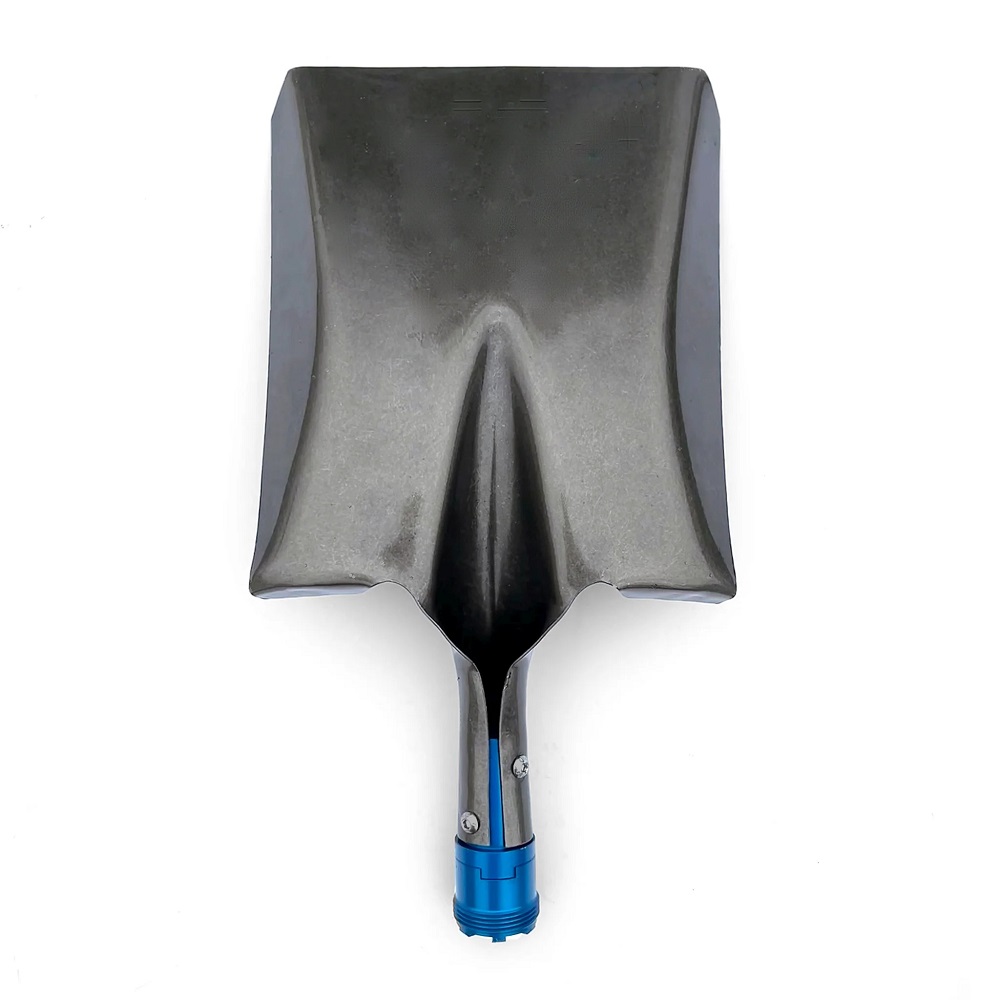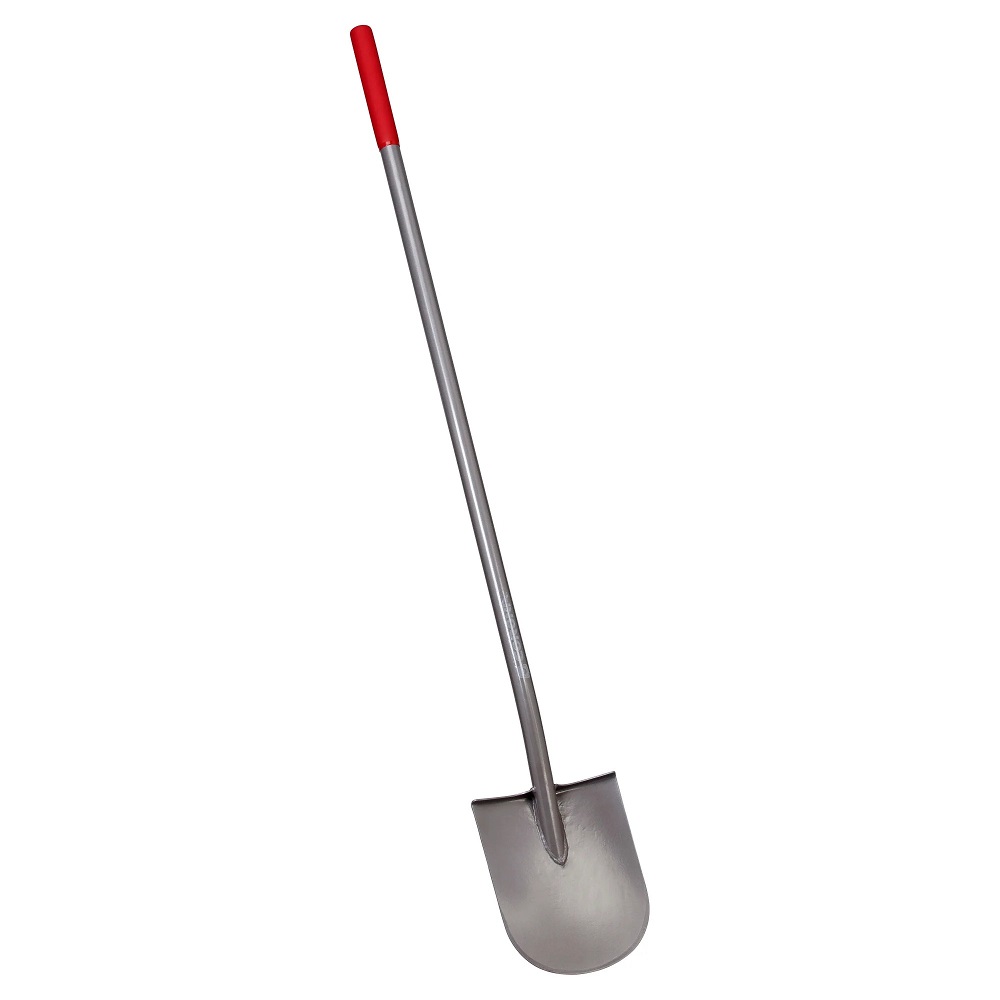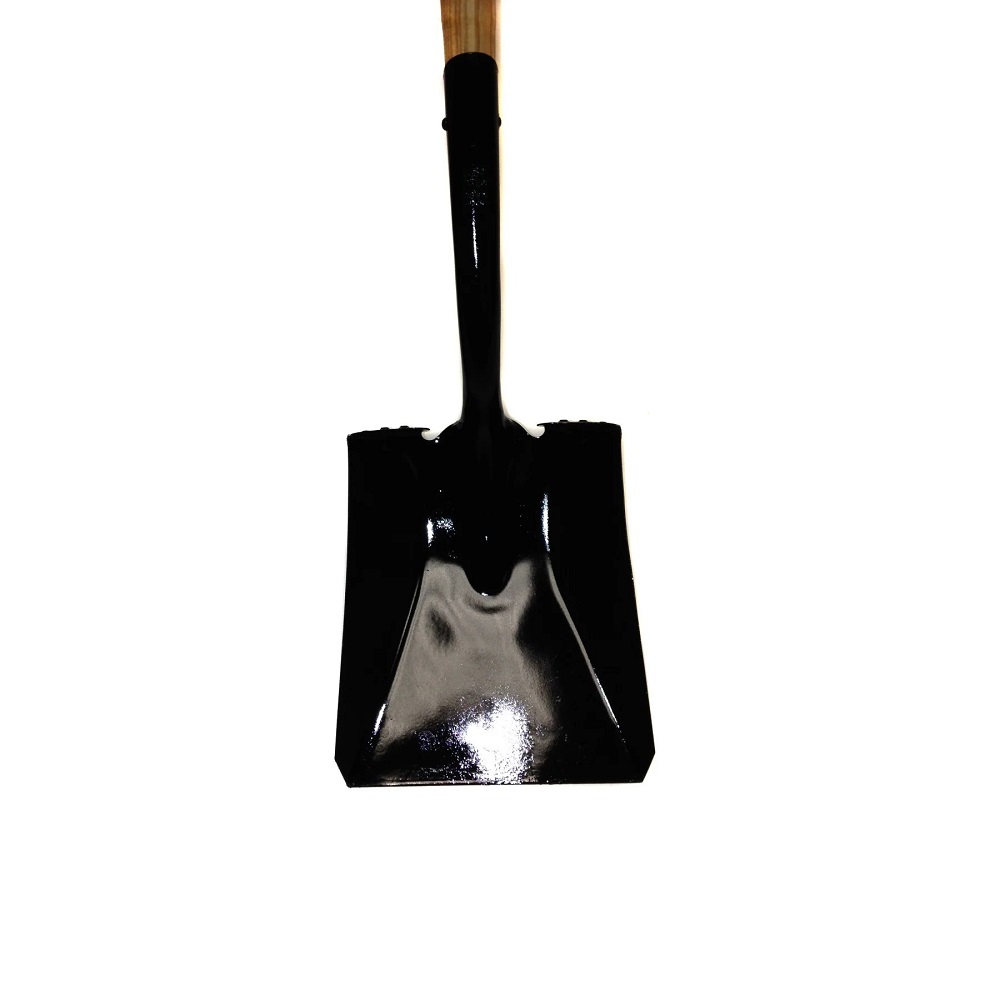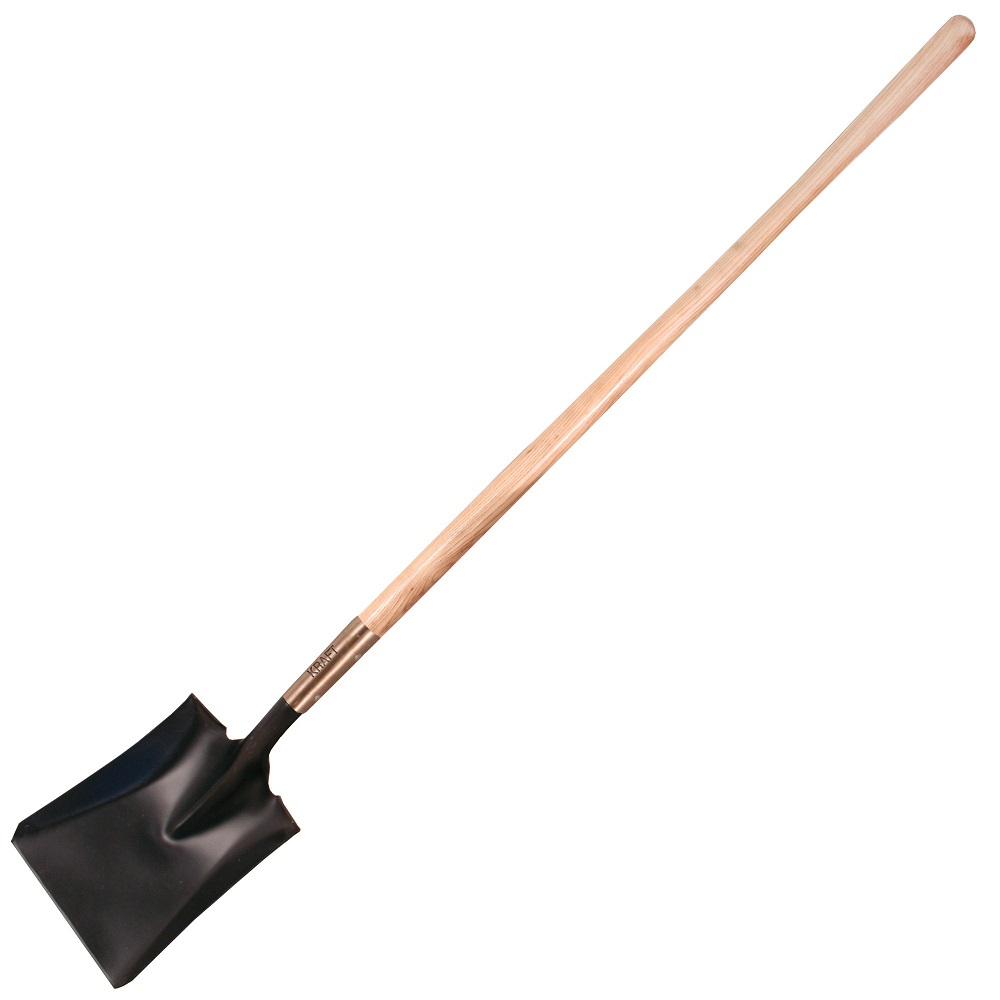The Anatomy of a Flat Shovel
Understanding the anatomy of a flat shovel is crucial for gardeners. Every part from blade to handle plays a role in its functionality and comfort.
Types of Blades
When it comes to flat shovels, blade types are key for different tasks. A typical flat blade is viable for moving loose material or light digging. Some shovels feature serrated edges which help to cut through roots or compacted soil with ease. The shape and thickness of the blade can also affect its durability and practicality.
Handles and Grips
Handles are the second critical part of flat shovel anatomy. They can be short for close-up work or long for added leverage. Materials vary with wood, steel, and fiberglass being the most common. Wooden handles offer a traditional feel but can wear over time. Fiberglass and steel provide durability and reduce the risk of breakage. Grips are often rubberized for comfort and to prevent slipping, aiding in control and reducing hand fatigue during prolonged use.

Evaluating Flat Shovel Materials
Choosing the right material for your flat shovel can greatly impact its performance and longevity. The handle and blade are the main components to consider when evaluating materials.
Wooden vs. Fiberglass vs. Steel Handles
Wooden handles have a classic feel and offer a good grip. They are less expensive but may not last as long as other materials. Fiberglass handles are strong and lightweight, providing good durability without the heaviness of steel. They can be more expensive but are often worth the investment for active gardeners. Steel handles are the most durable. They can withstand heavy use but are heavier, which might make them less comfortable during long gardening sessions.
Blade Durability: Stainless Steel vs. Carbon Steel
When it comes to blade material, stainless steel and carbon steel are common choices. Stainless steel is rust-resistant and requires less maintenance. It’s a good option for gardeners who leave their tools outdoors. Carbon steel is stronger and can maintain a sharp edge longer. However, it can rust if not properly cared for. Carbon steel blades are best for gardeners ready to invest time in maintenance for a high-performing flat shovel.
Flat Shovel Shapes and Sizes
Garden tasks demand different flat shovel shapes and sizes. This choice affects how well the tool meets gardening needs.
Choosing the Right Shovel for Your Task
Select a flat shovel based on the job. For general digging, a round-point shovel works well. A square-point shovel is ideal for scooping and moving loose materials. For slicing through soil or sod, a sharp, flat edge is best. Consider the task at hand to find the right shape.
Size Matters: When to Go Small or Large
The size of the flat shovel affects your work. Small shovels are good for tight spaces or minor garden touch-ups. They are light and easy to handle. Large shovels handle more material and save time on big jobs. However, they can be heavier and more tiring to use. Match the shovel size to the task and your own strength for best results.

Specialized Flat Shovels for Specific Tasks
Gardening often requires specific tools for specific tasks. Specialized flat shovels can elevate your gardening efficiency and precision. These tools are designed with unique features to tackle particular gardening projects.
Edging and Trenching
Edging and trenching tasks need flat shovels with sharp, straight blades. These shovels create clean lines along garden beds or walkways. They cut through sod and soil with precision, defining neat borders. Often, these shovels have foot platforms. This allows gardeners to apply extra force while edging.
For trenching, look for a flat shovel with a slightly concave blade. This shape helps scoop and remove soil for irrigation or electrical lines. A long handle adds leverage, making the work less strenuous.
Transplanting and Sod Cutting
Transplanting shovels have narrow blades to remove plants without disturbing roots. They cut neatly around the plant, protecting root structure. For sod cutting, flat shovels with sharp and flat blades are ideal. They slice through the sod allowing you to lift and roll it with ease. The blade’s sharpness is key for a clean cut, reducing damage to the surrounding area.
When opting for a flat shovel used in transplanting or sod cutting, ensure it is comfortable. A good grip reduces hand fatigue. Lightweight materials make the shovel easier to handle over extended periods. Choosing the right flat shovel for these tasks can make a big difference in your gardening projects.
Balancing Weight and Leverage
Choosing a flat shovel with the right balance between weight and leverage is crucial for efficient gardening. This balance helps reduce strain on the body and increases the ease with which gardening tasks are completed.
The Importance of Ergonomics in Shovel Design
Ergonomics play a critical role in the design of a flat shovel. An ergonomically designed shovel conforms to the shape of your hands and the movements of your body. This helps decrease the risk of injury and fatigue. Look for shovels with ergonomic handles that promote a natural grip and are angled to reduce back strain. Shovel heads should also be sized appropriately to prevent overexertion.
Weight Distribution and Ease of Use
The distribution of weight from the blade to the handle affects how easy a shovel is to use. A well-balanced shovel minimizes the effort needed to lift and move soil or materials. Lighter materials, like fiberglass, can make the shovel easier to maneuver without sacrificing strength. In contrast, a shovel that’s too heavy could lead to quicker exhaustion and lower productivity. Therefore, selecting a flat shovel with a balanced weight distribution optimizes both the effort you exert and the control you have over your work. Always take your physical capabilities into account when choosing the size and weight of your flat shovel to ensure the best gardening experience.

Maintenance Tips for Your Flat Shovel
To make your flat shovel last, you need to maintain it regularly. Here are some tips that will help you keep your flat shovel in top shape and extend its life.
Sharpening the Blade
A sharp blade makes digging easier and reduces your effort. Check the blade before each use. If it’s dull, sharpen it using a file or stone. Follow the original angle of the edge for best results. Use smooth, consistent strokes and always wear gloves for safety. After sharpening, protect the blade with a light coat of oil to prevent rust.
Handle Care and Storage Solutions
For wooden handles, sand any rough spots to prevent splinters. Use linseed oil to preserve the wood and prevent drying or cracking. For fiberglass and steel handles, wipe them down to keep them clean. Store your flat shovel in a dry place to prevent rust and decay. Hang it up or keep it off the ground to avoid moisture damage. Regularly check for loose screws or bolts and tighten them. By caring for your flat shovel properly, you ensure it remains reliable for many gardening seasons.
Popular Brands and Models
Gardeners seeking the best flat shovel will find several reliable brands to choose from.
Comparing Top Flat Shovel Brands
When reviewing flat shovel brands, consider their reputation and customer feedback. Top brands like Fiskars, True Temper, and Ames are known for their quality and durability. Fiskars offers innovative designs and ergonomics. True Temper specializes in strong, American-made tools. Ames provides a wide range of options that cater to different needs and budgets. Check out reviews and gardening forums to gather opinions from other gardeners.
Model Features and User Reviews
When examining individual models, look at their features. Some models boast anti-vibration handles, others have oversized steps for stable foot placement. User reviews can be a goldmine of information. These provide real-world insights into how the flat shovel performs during actual gardening tasks. Look for shovels with high ratings for comfort, durability, and effectiveness. Remember that the right model for you should align with the tasks you do most often in your garden.
